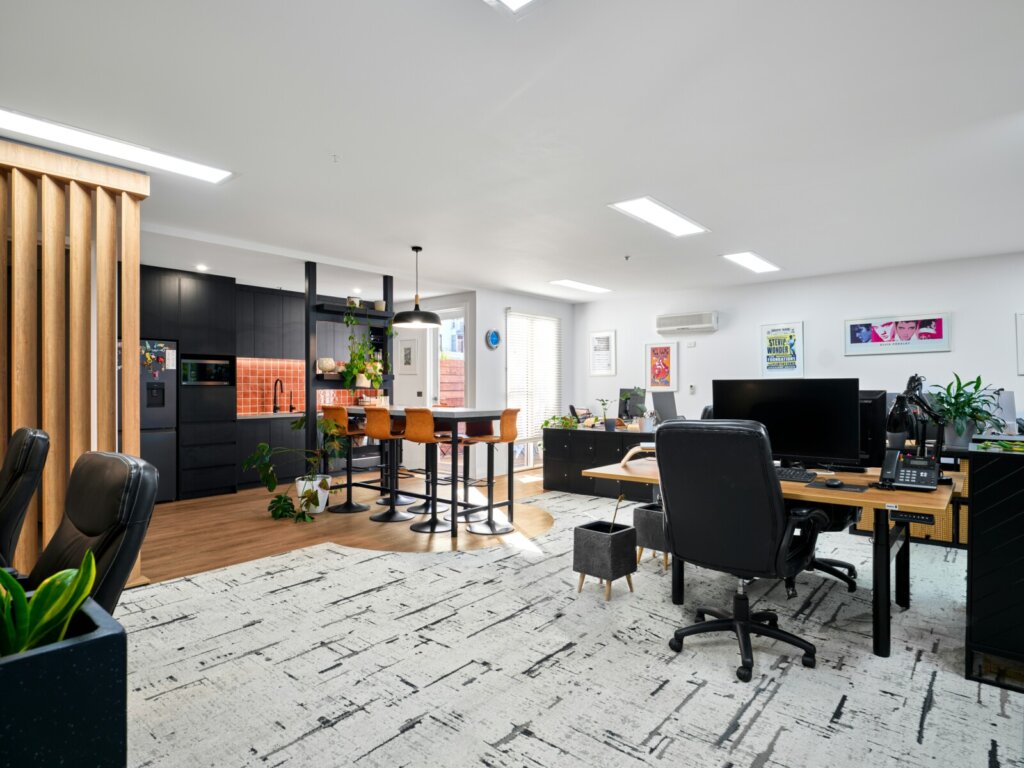Moving Office vs Refurbishing: What’s the Right Choice for Your Workspace?

When a workspace no longer supports daily operations, businesses typically consider two options, relocating to a new office or refurbishing the space they already occupy. Both come with benefits and challenges, and the most suitable choice depends on budget, time constraints, growth plans, and how well the current office can adapt to new working needs.
This guide breaks down the advantages and disadvantages of each option to help you evaluate which path aligns best with your organisation’s priorities.
Why Businesses Reconsider Their Workspace in the First Place
Companies explore relocation or refurbishment for several reasons, including:
- Expanding teams
- Shifts to hybrid working
- Outdated layouts
- High running costs
- Poor building performance
- Lease implications
Understanding the driver behind the change makes the decision clearer.
The Pros of Moving Office
1. Access to a space that already fits your needs
Relocating can instantly offer:
- More room for growth
- Better natural light
- Improved energy performance
- Modern facilities
In some cases, the new office requires minimal adjustments.
2. Opportunity to reset your office identity
A new environment can support new working models, such as agile zones or collaboration-focused spaces.
3. Potential to reduce long-term costs
Newer buildings may offer:
- Lower energy usage
- Improved insulation
- Flexible lease terms
- More efficient floorplates
The Cons of Moving Office
1. Higher upfront costs
Moving involves expenses such as:
- Dilapidation obligations
- New furniture and equipment
- IT relocation
- Moving services
- Potential downtime
For many businesses, these costs can be significant.
2. Disruption to employees and clients
Relocating may affect commute times, local amenities, parking, or accessibility.
3. Time-consuming planning and fit-out
Even if the new space is suitable, you may still need alterations before moving in extending the project timeline.
The Pros of Refurbishing Your Existing Office
1. Minimal disruption to daily pperations
Many refurbishments, especially phased or out-of-hours projects, allow businesses to continue operating.
Explore: Office Refurbishment Services
2. Cost-effective compared to relocation
Refurbishment often avoids:
- New lease costs
- Relocation expenses
- Full-scale new furniture investment
- It allows you to maximise what you already have.
3. Improves staff experience without changing premises
Refurbishment can upgrade:
- Layout
- Lighting
- Acoustics
- Air quality
- Meeting spaces
- Storage
All without uprooting staff from a familiar location.
When businesses choose to refurbish instead of moving, the focus usually shifts to rethinking layouts, improving comfort, and upgrading finishes while retaining the functionality of the existing building.
Read More: Why Refurbish Your Office Space?
The Cons of Refurbishing Your Existing Office
1. Limitations of the current building
Some offices have structural or compliance constraints that restrict what can be changed.
2. Space may still be too small
Even with optimisation, some workplaces cannot accommodate long-term growth.
3. Potential temporary disruption
Although manageable, refurbishments may involve:
- Noise
- Temporary desk moves
- Minor downtime
Cost Comparison – Moving vs. Refurbishing
While every project differs, the cost drivers are consistent.
Key costs involved in moving office
- Legal and lease fees
- Dilapidations
- New office fit-out
- IT relocation
- Moving services
Key costs involved in refurbishment
- Interior updates
- New furniture or storage
- Layout reconfiguration
- Mechanical and electrical works
- Decorative upgrades
| Factor | Moving Office | Refurbishing |
| Upfront Costs | High | Medium |
| Disruption | Medium-High | Low-Medium |
| Timeline | Longer | Flexible |
| Flexibility | High | Depends on building |
| Long-Term Suitability | High | Medium-High |
Timeline Comparison
Moving office typically takes longer
The timeline includes:
- Searching for a new space
- Negotiating lease
- Designing the new office
- Fit-out works
- Physical relocation
Refurbishment can be phased to reduce downtime
Many companies choose:
- Weekend works
- Area-by-area upgrades
- Out-of-hours installation
This lets teams remain operational, which is why refurbishment remains the preferred option for businesses with tight schedules.
Key Questions to Ask Before You Decide
1. Will our team grow significantly in the next few years?
If yes, relocation may be a more sustainable option.
2. Does our current building limit what we can change?
Structural restrictions may influence your decision.
3. How important is location to staff and clients?
Moving can impact retention and accessibility.
4. What is our realistic budget?
Both options require calculating upfront and long-term costs.
Final Thoughts
Both moving office and refurbishing offer important advantages, and the right choice depends on how your business prioritises cost, space needs, staff experience, and long-term plans. If your building can support the improvements you need, refurbishment is often the most efficient route. If growth or structural limitations stand in the way, moving may provide a more future-proof solution. Evaluating both options with clear information helps ensure your next step supports both immediate needs and long-term business goals.
FAQs
How far in advance should a business plan for an office move?
Most companies start planning 6–12 months ahead to allow time for property searches, lease negotiations, design, and fit-out.
What hidden costs are often overlooked in office relocation?
Commonly missed expenses include IT cabling, new access control systems, storage changes, and increased service charges in newer buildings.
Can an old office be refurbished without replacing all furniture?
Yes. Many refurbishments integrate existing furniture, supplemented with new ergonomic or modular items only where required.
Is it possible to refurbish during business hours?
Yes. Many contractors offer phased or out-of-hours working to reduce disruption.
Do businesses need permission from the landlord to refurbish?
Most upgrades require landlord approval, especially changes to partitions, services, or mechanical and electrical systems.
What factors determine whether a space can be refurbished sustainably?
Elements such as material reuse, building performance, insulation, and access to natural light all influence sustainability.
Is relocating more common for hybrid-working businesses?
Often yes, because hybrid teams may need less space, allowing companies to downsize and reduce rental costs.